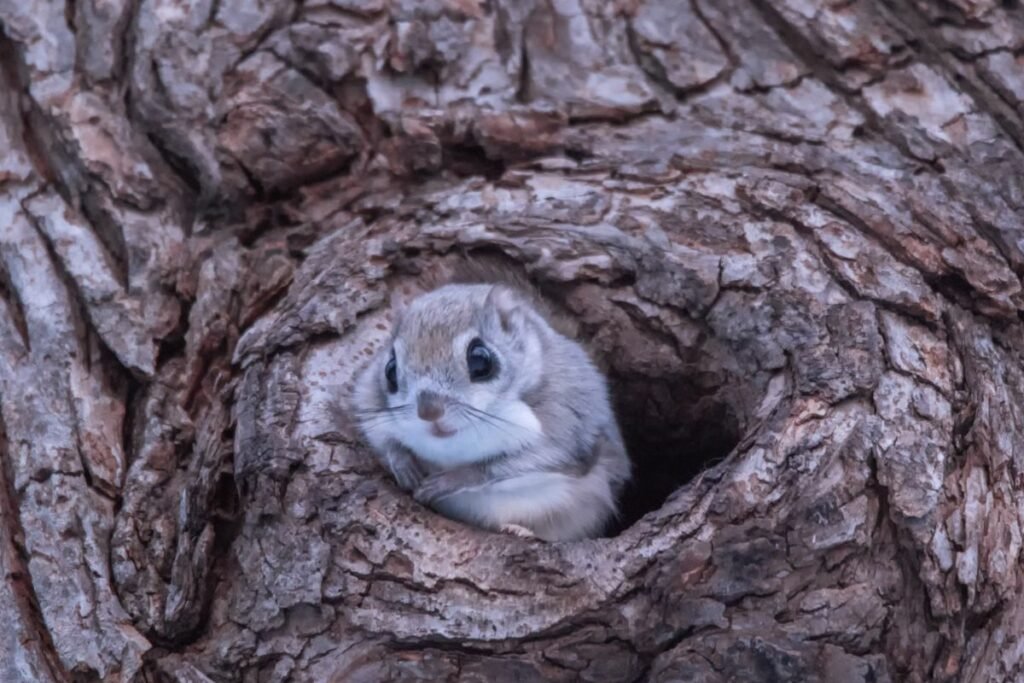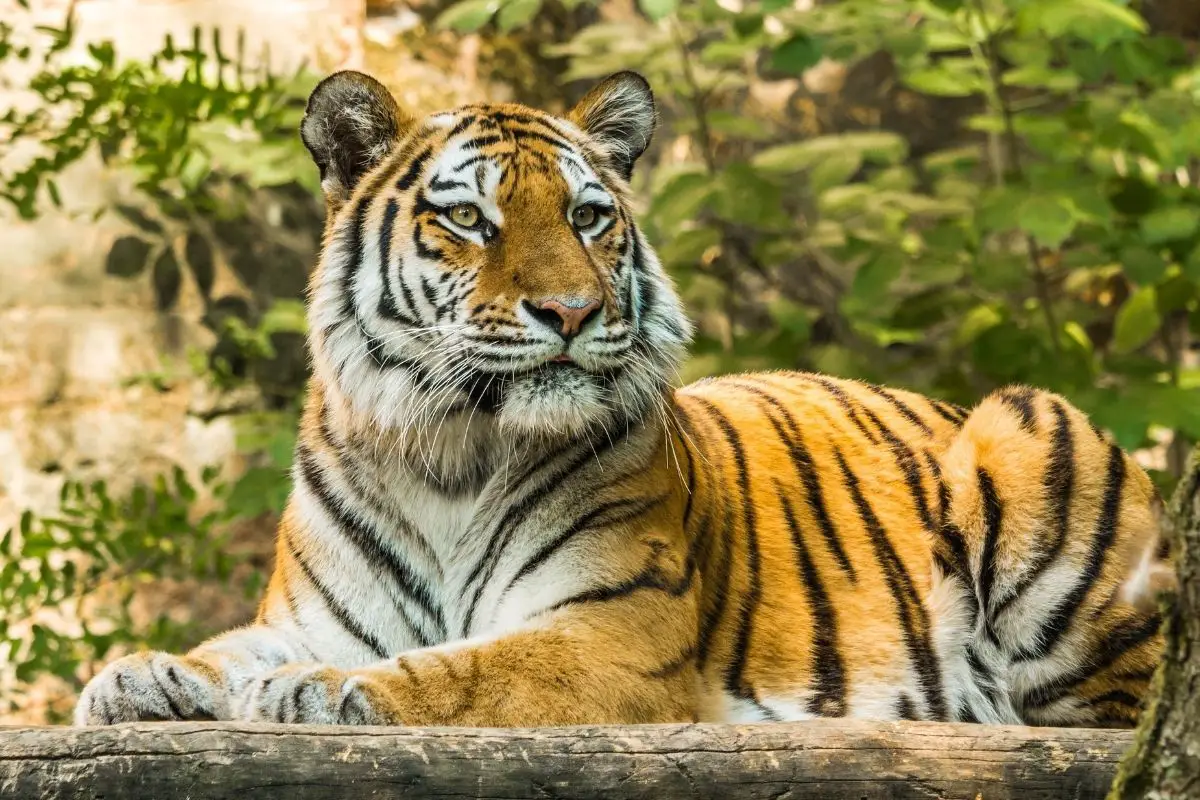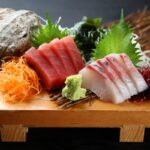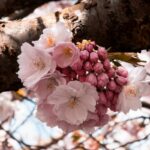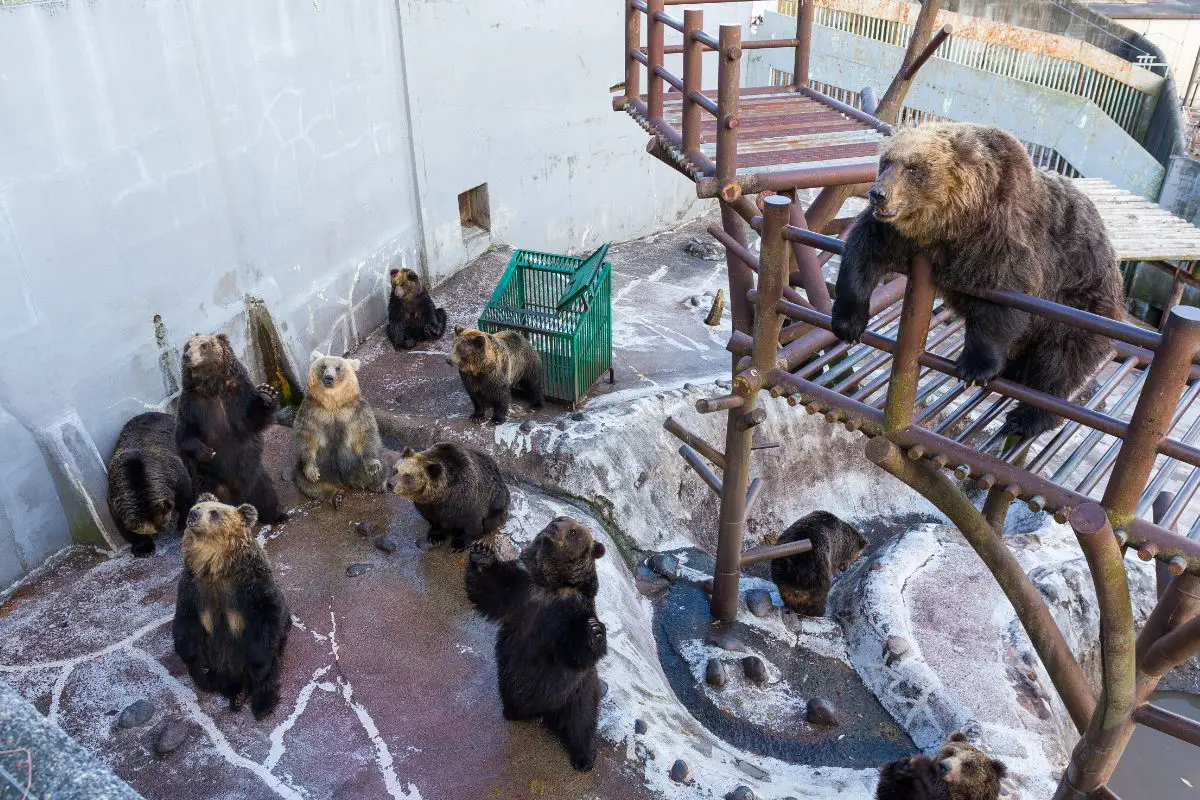Being an island nation means that there are plenty of animals that exist nowhere else on earth bar your island. You may think this is an oversimplification, but there is actually science to back up this claim.
Even if you look at island nations now, you will probably find at least 1 or 2 species that are unique to that island. Some good examples would be the red grouse in the UK or the Komodo dragons of Komodo island in Indonesia.
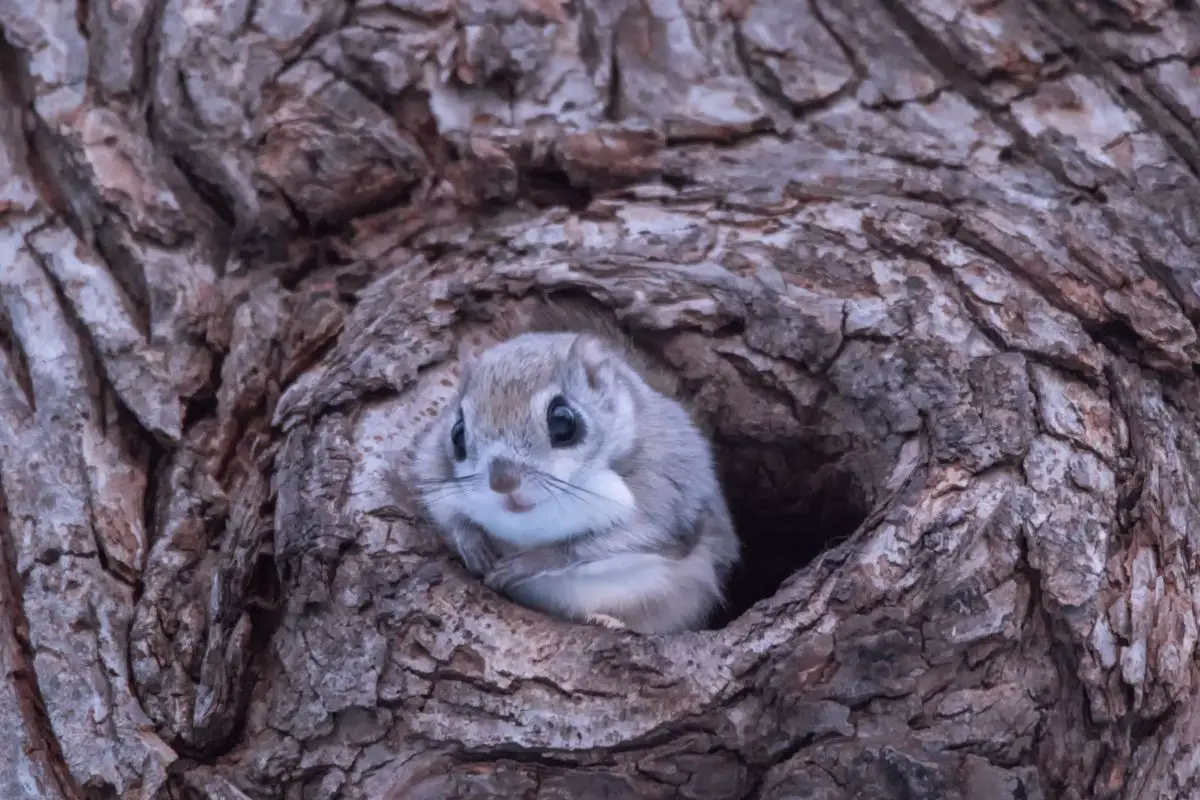
However, this also means that a lot of common species you find on continents you won’t find on these islands, or they have only been introduced there recently. This is true for most island nations and is also true for Japan.
A lot of the animals we associate with Japan (see also our article on pandas) are quite unique to the islands. The tanuki, the giant salamander, the Japanese macaque, the list goes on and on.
Yet, what animals that are commonplace live in Japan (see also ‘Are There Bears In Japan?‘)? Do squirrels live in Japan, for instance? Or are there some other animals that have taken their niche?
In this article, we will take a closer look at Japan and see if there are any squirrels currently living on the islands.
So, Are There Squirrels In Japan?
Short answer: yes, there are plenty of squirrels in Japan. Long answer: yes, squirrels are plentiful in Japan, and you won’t find Japanese squirrels anywhere else in the world.
The Japanese squirrel is endemic to the islands of Japan, meaning that it exists only on the islands of Kyushu, Shikoku, and Honshu.
It is very similar to many other squirrels, being in the same family as the gray and red squirrels of America and Eurasia, but it has specifically adapted for the Japanese ecosystems that it found itself in.
These squirrels are arboreal and spend most of their time living in trees. Their preferred environment is the mountainous forest areas that humans rarely access, but they are also numerous in cities with large parks.
These little creatures reach up to 8 inches with just their bodies and then have a maximum of a 7-inch tail.
The Japanese squirrel is a mostly solitary species that acts independently of other squirrels, yet there is still an established hierarchy amongst these animals based on gender, confidence, and size.
This hierarchy appears in the mating season and those that are higher up the social ladder will let others know quickly who is in charge.
This species of squirrel is diurnal, being active throughout the daytime and sleeping at night, and it does not hibernate. Instead, the Japanese squirrel will get a thicker winter coat and be less active, preserving energy throughout the winter months instead.
Even throughout the wintertime, these squirrels maintain a home range that they regulate and patrol for intruders. The reasons for this are due to the competitive environment that squirrels live in for mates and resources.
If another squirrel is allowed into their territory, they may steal your food or mates and leave you with nothing.
In order to keep other squirrels off their turf, these squirrels will engage in displays. These include foot stamping, calls, tail wagging, and teeth chattering to either drive away rivals or attract potential mates.
Since these squirrels only live between 5 and 10 years in the wild, it is no wonder that they are so aggressive when it comes to establishing themselves.
What Do Japanese Squirrels Eat?
Squirrels in general are mostly herbivorous creatures that mostly consume nuts, fruits, seeds, fungi, young leaves, flowers, buds, and anything else that is remotely edible. Occasionally, a squirrel will eat insects if it is desperate or if it hasn’t collected enough food for the coming winter.
Japanese squirrels also follow this diet plan, but with one massive exception. That is the inclusion of walnuts. Don’t get me wrong, I’m sure other squirrels eat walnuts, but nowhere near on the same level as these critters.
The Japanese walnut is another being that is exclusive to the areas around Japan, and the Japanese squirrel has formed a somewhat symbiotic relationship with it.
The dispersion of the walnut seeds by the squirrels has made the trees genetically predisposed towards making larger seeds in areas where squirrels live.
This is because, like all squirrels, Japanese squirrels store food by burying it in the soil. Every year, they bury far more than they need and leave a lot of seeds planted in the ground. These seeds become trees in future years.
As such, it benefits the walnut tree to make its nuts more appealing to the squirrel. Their relationship has become so intertwined that almost 35% of the squirrel’s diet is Japanese walnuts, though it only goes this high in certain areas.
Other Japanese Squirrels
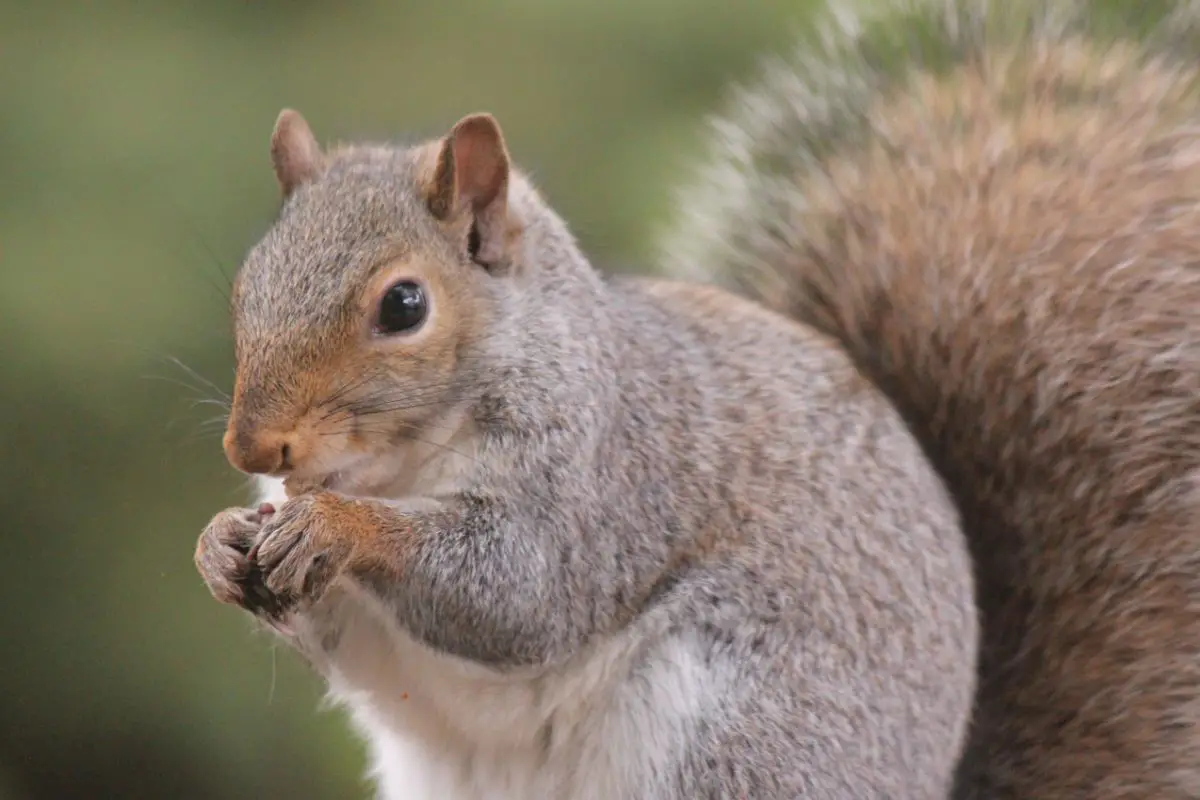
Although we have spoken about the most common species of squirrel in Japan, it is not the only one. In fact, there are two other species of squirrel, however their range is not as vast as the Japanese squirrel. These are the Japanese dwarf flying squirrel and the Japanese giant flying squirrel.
These two species of squirrel are very similar to one another and live on the islands of Kyushu, Honshu, and Shikoku. Still, these squirrels are not as adaptable as the Japanese squirrel, and so you are less likely to find these two species in cities.
The behaviors of these two species of squirrel are very similar to the Japanese squirrel, except in two areas. One, they are nocturnal and two, they are very social with one another.
These squirrels will frequently be grouped together in a single tree when it is not mating season, and then when it is, they will spend time with their mate.
If we look at the genetic differences, they are quite vast. The Japanese squirrel is in the genus Sciurus, while the Japanese dwarf flying squirrel is in the genus Pteromys and the Japanese giant flying squirrel is in the genus Petaurista.
This means that these two squirrels are not that closely related to each other, either.
However, there is one thing they do have in common. They have a flap of skin between their forelimbs and hind limbs that, when stretched, allows them to glide through the trees, giving them a pseudo-form of flight.
Problems That Japanese Squirrels Face
Unfortunately, no matter what kind of squirrel you are in Japan, there is a big problem that you face. This is forest fragmentation. Japan has the 11th largest population in the world – sitting at 126 million people – in an area the size of California.
Thanks to the natural mountain ranges and extreme weather conditions, most people live in the cities around the coast, which has spared a lot of wildlife and forests from being cleared away. But that doesn’t mean it hasn’t happened. Squirrels rely on forests to live, and without them, they struggle.
Although these little rodents are certainly adaptable, if you take away their forests, they will likely follow them into oblivion in a few years.
Yet, the Japanese people have become more aware of the effect this is having on their country and being more proactive in protecting their environment in the last few years. With this change in attitude, it is hopeful that we will continue to see these adorable critters for many years to come.
Final Thoughts
Japan certainly has squirrels, in fact it has three different kinds, and you won’t find them anywhere else on earth.
Although they have begun to struggle in their native home a little in the last few years thanks to forest fragmentation, their plight has been noticed and there has been a more concerted effort to protect the natural places of Japan.
This growing trend is a good one and should ensure that for hundreds of years to come if you enter a Japanese forest, you will hear the chirping of squirrels.

